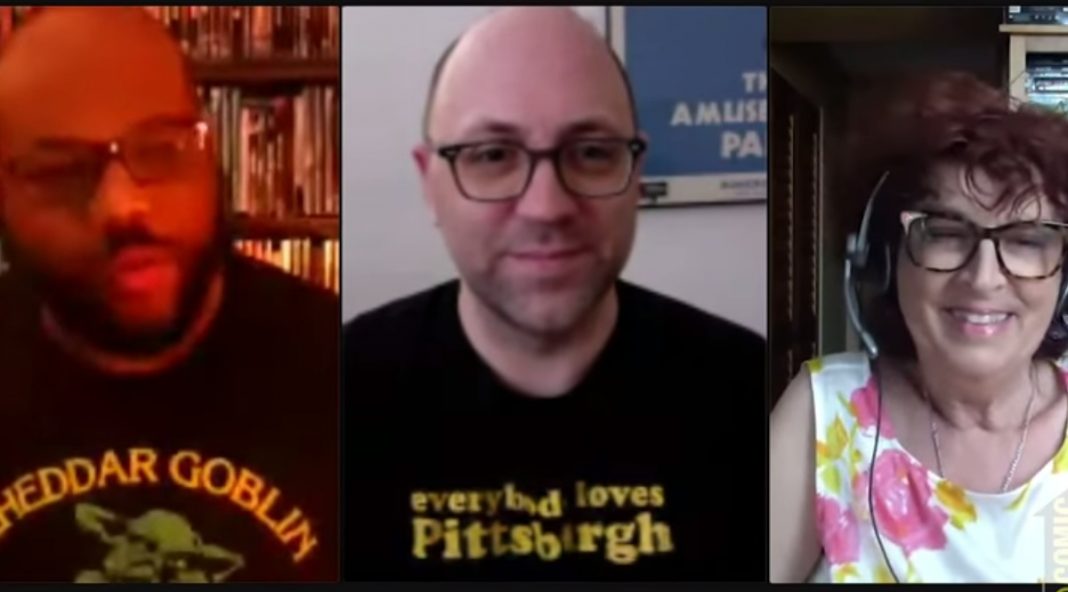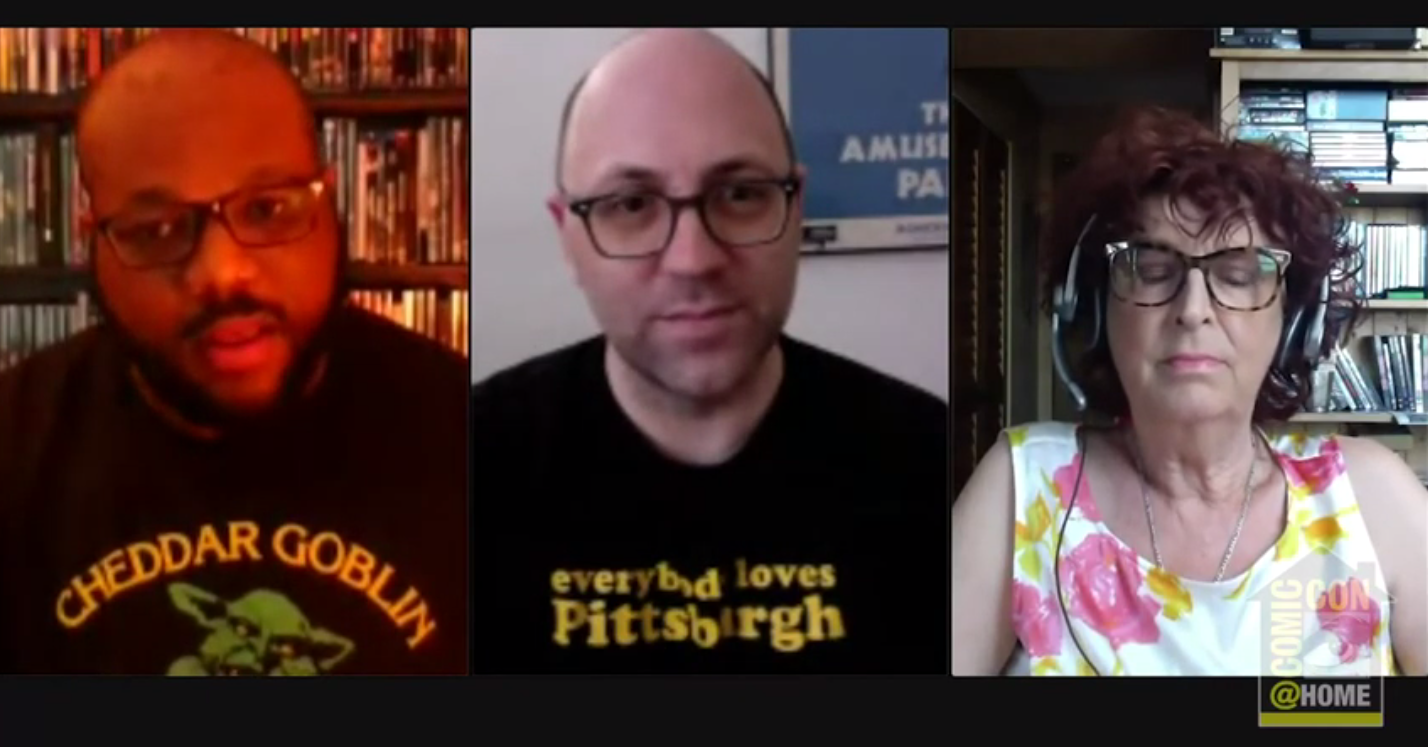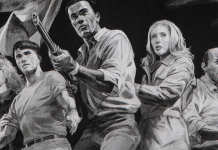On Friday, July 24th at 5:00 PM San Diego Time, the prerecorded The Living Dead: Celebrating the Legacy of George A. Romero panel was released on YouTube.
The panel featured Suzanne Desrocher-Romero, the widow of George A. Romero, who shared many personal insights and memories of her late husband. Daniel Kraus, a New York Times bestselling author (and co-author of Trollhunters with Guillermo del Toro) and a lifelong fan of Romero’s work, was selected by Suzanne to complete The Living Dead (coming August 4th), a novel that Romero had been working on for a very long time, joined her. Richard Newby (The Hollywood Reporter) moderated the panel.
“George A. Romero invented the modern zombie with Night of the Living Dead in 1968, creating the monster that has become a key part of pop culture,” said Newby. “Romero often felt hemmed in by the constraints of filmmaking. To tell the story of the rise of the zombies and the fall of humanity the way it should be told, Romero turned to fiction. Unfortunately when he died, his last masterpiece, The Living Dead, was incomplete. Enter bestselling author Daniel Kraus. A lifelong Romero fan, Kraus was honored to be asked by Suzanne Romero to complete The Living Dead.”
Suzanne explained that Romero was a prolific writer.
“George loved to write, he was always writing,” said Suzanne. “And he was writing this story and he would do it intermittently, in-between stuff. He got a fair distance but he didn’t finish it. So he passed, and this was early on, right Dan? This was like, a month maybe afterwards, my manager, Chris Roe, suggested that we contact a friend, and it was Dan, to talk about maybe finishing the book, and Dan was gracious enough to consider it an accepted the offer.”
“I more than just was gracious to accept it,” said Kraus. “I wouldn’t even call it a lifelong dream because it was beyond something that I would have ever dreamt. George meant everything to me growing up, so of course I said yes! I couldn’t imagine a project that I’d want to work on any more than this one.”
Kraus explained that getting into the headspace of Romero took a few extra steps.
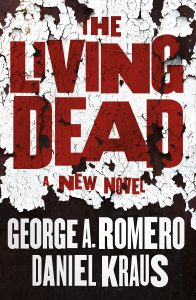
As if that weren’t enough already, Romero still had more surprises in store for Kraus.
“And then lastly, and again, at this point I’m hundreds of pages into the book, so this is a real pain in the ass, but a great one,” said Kraus, “We found about a ten-page letter that George had written that plotted out the sort of hanging strands of the plot. So then I suddenly sort of had to retro-fit a bunch of stuff and do some really interesting work about, ‘can this character be this character,’ ‘can these two characters swap.’”
Plus, Kraus conducted some serious research to determine some of Romero’s intentions and potential hidden meanings.
“And then secondly, of course, was just the research part,” said Kraus. “So this was obviously watching all of his films yet again, reading every interview and watching every interview that I could find about him. He was a very humble guy but every once in a while in a one of the interviews he’d let a sort of hint of his grandeur get through. Listening to commentary tracks, obviously, reading every bit of scholarly analysis that I could, side projects that he did, introductions to other books and comic books.”
After conducting plenty of research, Kraus was able to establish a timeline for the six films in Romero’s Dead cycle.
“Eventually, I was able to create a timeline of his films, which is more puzzling than it seems; it’s not chronological,” said Kraus. “If you ignore the decade shifts between the films and just look at how far each film is from the zombie outbreak, you get a really curious – so in the Author’s Note of [The Living Dead], you find out that the actual sequence of the films are Night (1968), Diary (2007), Survival (2009), Dawn (1979), Land (2005), Day (1985), all mixed up. But once I had a sense of what’s the first through sixth point, I could sort of being to map out – or, what would be the seventh through the fifteenth point – I was able to sort of game out where he was going with zombies.”
Kraus said that the final piece of the puzzle was imparted through interviews with Suzanne.
“And then finally, one of the absolutely most important things that I did was I interviewed Suze,” said Kraus. “I met her in Toronto and we had a long interview where I learned about George’s politics, his concerns, where he was going with the idea of zombies and his work, and how he lived and how he died, and what he loved… And what he loved became very important to the book. Suze gave me a long list of the music he loved and the movies he loved, and I studied those, and those were critical. I studied what George loved, so that I could be inspired by what he was inspired by. And for example, his favorite film, The Tales of Hoffmann, I was able to use that film as a scaffolding to build – that opera is a three-act structure, and I was able to use that as a model for the book’s three-act structure, and a thematic guide for each act. So I treated it like I was working on an unfinished Rembrandt, I took it very seriously.”
Kraus explained that the book is three acts, and the second act, which is the shortest, is when the films take place. Kraus emphasized that the novel was meant to serve as a supplement to the six films, and that it grows out of the foundation laid by Romero’s Dead cycle.
Kraus said that fans of Romero’s work will find some of what they expect to find in The Living Dead.
“There’s sharp, even brutal, commentary on American society, that I don’t think has ever been more poignant and cutting than it is right now,” said Kraus. “A lot of stuff about the haves and the have-nots. The book involves a pandemic situation that we can get out of, but only if we work together.”
However, there are some surprises in store for readers, as well.
“Some of the smaller more granular surprises that fans may find in the book,” said Kraus. “For one, how important zombie animals are. I did a lot of research into George’s sort of ideas, deleted scenes, things he cut out of films, and it showed me how interested he was in exploring the idea of zombie animals. Once I sort of figured that out, the idea of animals led directly to the larger idea that guides the book, that we always thought the zombies were the plague, but that’s wrong. Humans are the plague, and that zombies are the antibodies that are sent to more or less wipe out the plague and more or less save the planet.”
Suzanne said reading the finished novel was an emotional experience for her, and shared that one of the main characters, Luis, shares a name with the nickname she would give to George when she felt he was being overly pessimistic in conversation.
“George was a half-empty kind of guy,” said Suzanne. “But really, deep down, he was all about full. He was a dichotomy. But he often looked at life in a negative or pessimistic view, and this book reflects that – I have to say, like I said, it was emotional, I cried, I was touched by the characters, I felt that Dan was the best person to write this book.”
Suzanne said that she was impressed by how well Kraus was able to construct the novel out of the work of two separate writers.
“The authors had two different styles, but Dan was able to knit it together,” said Suzanne.
“There’s a comforting presence to George’s voice,” said Newby. “Even though his works are sometimes pessimistic, I do think there’s a comfort and a humanity overall to his works that really comes through in this novel.”
In order to capture Romero’s voice as well as possible, Kraus didn’t just consider Romero’s zombie movies, he considered the entirety of his versatile cinematic output, including movies like Martin (1978) and Nightriders (1981).
“I think one of the reasons that I appealed to George’s manager Chris Roe as a co-author was he knew me as a real student of George’s, and I don’t mean a student of his zombie films, I just mean a student period,” said Kraus. “How else can I say it? I grew up on his movies and I loved all of them. I don’t think he ever made a bad movie. So part of my research for the book was in no means limited to his zombie films, to get an idea of who he was as a creator and a thinker, I really had to look at everything he did.”
Kraus included Easter egg-type nods to all of his work in The Living Dead, and emphasized how important it was for him to look beyond just the six Dead films while researching for the book.
However, Suzanne did have a remarkable anecdote about Romero and the Dead cycle.
“When I met George, I didn’t know who he was, and about three or four months into our relationship he said to me, ‘I guess its time for you to see my movies,’” said Suzanne. “So we spent a weekend doing a Romero film festival, and I was sitting next to maestro for three days, and I look back at it and I would think, ‘oh my goodness, how many people would be so envious of me, and being with him, and watching all the movies and him telling me the stories and the things he hated and the things he liked, and the things I hated and the things I liked…’ It was a great three days. Finally, a glimpse as to why people thought he was a great filmmaker – I did not know, but I do now.”
When it came to Romero’s favorite of his films, Suzanne said there was a clear victor.
“He loved Martin,” Suzanne said. “There is no doubt about, it was his favorite film. And one of the reasons he loved that film was he got to shoot, frame-by-frame, absolutely everything he wanted to do. As a director, to have full sovereignty from beginning to end is so rare, and he got that opportunity as an artist to do the film he wanted to do, and he loved it.”
Kraus said that he had a few favorite moments from Romero’s oeuvre.
“There’s a great moment in Dawn where Fran and Fly Boy are in bed together,” said Kraus. “And it’s after they’ve sort of cleaned out the mall of zombies and they’re sort of living high on the hog, and they have everything they want, and yet, they’re sitting in bed, and they’re not really looking at each other, and it’s just this sort of slow zoom out. And it just sort of shows you that even after you’ve won everything, after you think you’ve won everything, that you still could have nothing. There’s something very nasty about that as far as the American dream, or what it’s supposed to be.”
The other moment Kraus cited came from Survival.
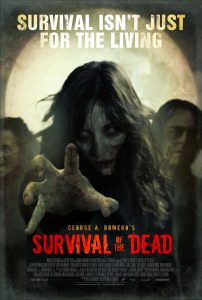
“I also think the ending of Night of the Living Dead still gives me goose bumps,” said Suzanne. “It’s just so powerful. And it’s still powerful! Everything, the music, the sense of despair… Even to this day, its very, very powerful.”
Suzanne is the founder and president of The George A. Romero Foundation, which is dedicated to supporting artists and filmmakers who have been inspired by Romero’s legacy. Fortunately, the creators of tomorrow continue to be inspired by Romero’s vision, thanks in part to efforts to preserve his legacy, such as The George A. Romero Archival Collection, recently acquired by the University Library System at the University of Pittsburgh.
Did you preorder The Living Dead, coming August 4th, 2020? If so, you can get a free poster featuring art by Chelsea Mann!
Miss any of our other SDCC 2020 coverage? Click here for much more!


